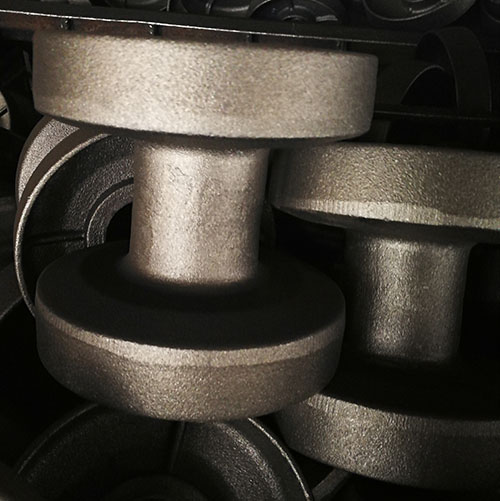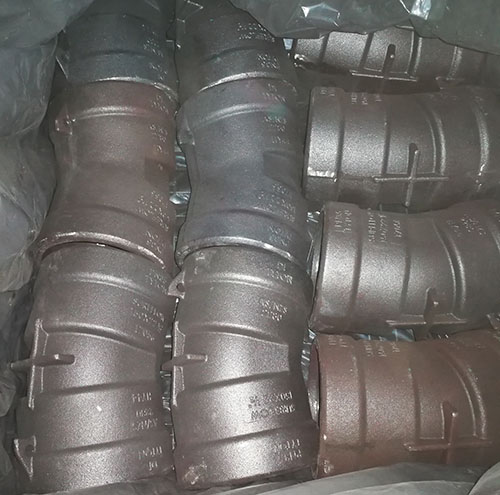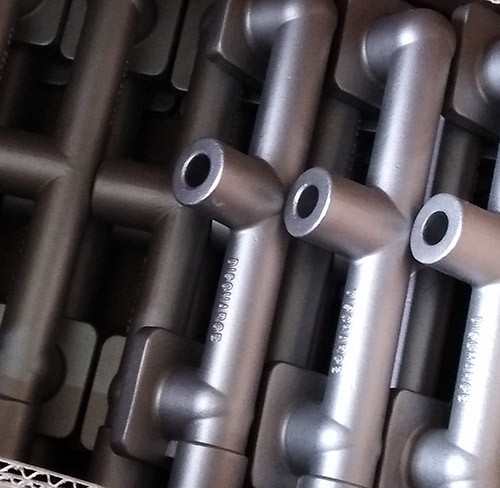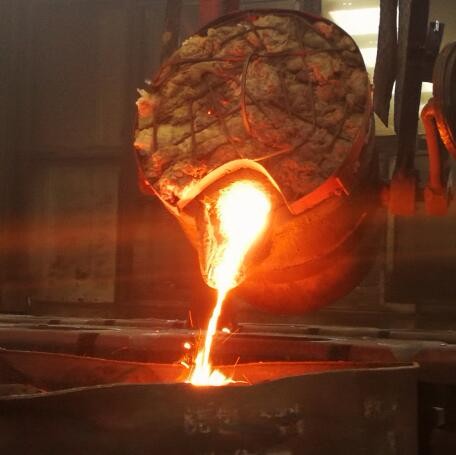Ductile Iron vs Cast Steel
Which Alloy is Better? Ductile Iron Parts or Cast Steel Parts
We’ve already compared ductile iron castings to gray iron castings in previous articles, here we’d like to compare ductile iron and cast steel across a variety of properties to help determine which alloy is more suitable for a given application. We’ll take a look at tensile strength, ability to absorb shock, weldability, abrasion resistance and corrosion resistance.
Note: Ductile iron with its carbon content between 3.0%-3.9% has a higher carbon content than cast steel which normally has a carbon content of 0.08%-0.60%.
Tensile Strength
While there is no large difference when it comes to tensile strength, ductile iron has the greater yield strength (40 ksi). Cast steel, on the other hand, can only reach 36 ksi yield strength.
Comparison between Ductile Iron and Cast Steel
As the strength of ductile iron increases, ductility decreases.
Cast ASTM A536 Ductile Iron | Cast Steel ASTM A27 | ||||
Ultimate Tensile Strength (ksi) | Yield Strength (ksi) | Elongation (%) | Ultimate Tensile Strength (ksi) | Yield Strength (ksi) | Elongation (%) |
60 | 40 | 18 | 60 | 30 | 22 |
65 | 45 | 12 | 65 | 35 | 24 |
80 | 55 | 6 | 70 | 36 | 22 |

Shock Absorption and Weldability
Ductile iron has superior shock absorption to steel. The average damping capacity for ductile iron is 6.6 times greater than SAE 1018 steel .
Cast steel has greater weldability.
Abrasion Resistance
Ductile iron has higher abrasion than cast steel and is typically used in friction wear mechanisms e.g. engine crankshafts etc.. Its superior abrasion resistance is due, in large part, to the high volume percentage of graphite which acts as a graphitic lubricant.
In abrasive wear mechanisms, austenitic ductile iron grades offer great wear resistance as well as improved strength. ADI grades of ductile iron are made by alloying the metal and heat treating.
Corrosion Resistance
Ductile iron’s corrosion resistance is superior to unalloyed steel, and even highly alloyed steels in certain environments. Ductile iron’s corrosion resistance can be improved by understanding the corrosion mechanism and alloying the material appropriately.

Impact Resistance
Ductile iron’s impact properties are microstructure dependant. Ductile irons, in general, have good impact resistance. This is important as impact resistance depends on the degree of ferritization in the microstructure. Cast steel would be more consistent being a homogeneous microstructure.
Ductile iron, because of the increased strength and ductility is used in more engineered applications:
Cable drums
Frames
Gear boxes
Pump parts
Benefits of ductile iron are as follows:
Improved castability
Lower costs
Improved vibration dampening
Improved corrosion resistance
Superior compressive yield strength
Characteristic | Cast Steel | Ductile Iron |
Castability | Preferred | |
Ease of Machining | Preferred | |
Vibration Dampening | Preferred | |
Compressive Yield Strength | Much Superior | |
Surface Hardenability | Better for Sliding Wear | |
Modulus of Elasticity | Slightly higher | |
Impact Resistance | Preferred | |
Corrosion Resistance | Preferred | |
Wear Resistance | Depends on wear mechanism | Depends on the wear mechanism - superior performance in friction based applications |
Cost of Manufacture | Preferred |


